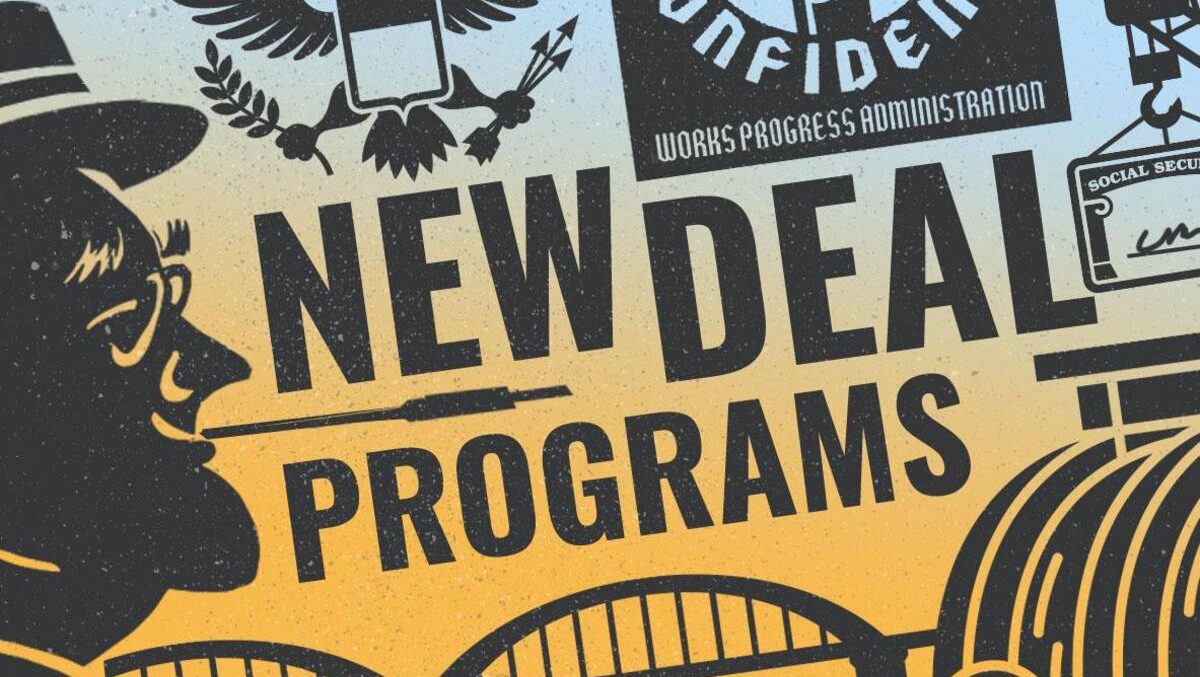
Over the past decade and a half, virtually every branch of the federal government has taken steps to weaken the patent system. As reflected in President Joe Biden’s July 2021 executive order, these restraints on patent enforcement are now being coupled with antitrust policies that, in large part, adopt a “big is bad” approach in place of decades of economically grounded case law and agency guidelines.
This policy bundle is nothing new. It largely replicates the innovation policies pursued during the late New Deal and the postwar decades. That historical experience suggests that a “weak-patent/strong-antitrust” approach is likely to encourage neither innovation nor competition.
The Overlooked Shortfalls of New Deal Innovation Policy
Starting in the early 1930s, the U.S. Supreme Court issued a sequence of decisions that raised obstacles to patent enforcement. The Franklin Roosevelt administration sought to take this policy a step further, advocating compulsory licensing for all patents. While Congress did not adopt this proposal, it was partially implemented as a de facto matter through antitrust enforcement. Starting in the early 1940s and continuing throughout the postwar decades, the antitrust agencies secured judicial precedents that treated a broad range of licensing practices as per se illegal. Perhaps most dramatically, the U.S. Justice Department (DOJ) secured more than 100 compulsory licensing orders against some of the nation’s largest companies.
The rationale behind these policies was straightforward. By compelling access to incumbents’ patented technologies, courts and regulators would lower barriers to entry and competition would intensify. The postwar economy declined to comply with policymakers’ expectations. Implementation of a weak-IP/strong-antitrust innovation policy over the course of four decades yielded the opposite of its intended outcome.
Market concentration did not diminish, turnover in market leadership was slow, and private research and development (R&D) was confined mostly to the research labs of the largest corporations (who often relied on generous infusions of federal defense funding). These tendencies are illustrated by the dramatically unequal allocation of innovation capital in the postwar economy. As of the late 1950s, small firms represented approximately 7% of all private U.S. R&D expenditures. Two decades later, that figure had fallen even further. By the late 1970s, patenting rates had plunged, and entrepreneurship and innovation were in a state of widely lamented decline.
Why Weak IP Raises Entry Costs and Promotes Concentration
The decline in entrepreneurial innovation under a weak-IP regime was not accidental. Rather, this outcome can be derived logically from the economics of information markets.
Without secure IP rights to establish exclusivity, engage securely with business partners, and deter imitators, potential innovator-entrepreneurs had little hope to obtain funding from investors. In contrast, incumbents could fund R&D internally (or with federal funds that flowed mostly to the largest computing, communications, and aerospace firms) and, even under a weak-IP regime, were protected by difficult-to-match production and distribution efficiencies. As a result, R&D mostly took place inside the closed ecosystems maintained by incumbents such as AT&T, IBM, and GE.
Paradoxically, the antitrust campaign against patent “monopolies” most likely raised entry barriers and promoted industry concentration by removing a critical tool that smaller firms might have used to challenge incumbents that could outperform on every competitive parameter except innovation. While the large corporate labs of the postwar era are rightly credited with technological breakthroughs, incumbents such as AT&T were often slow in transforming breakthroughs in basic research into commercially viable products and services for consumers. Without an immediate competitive threat, there was no rush to do so.
Back to the Future: Innovation Policy in the New New Deal
Policymakers are now at work reassembling almost the exact same policy bundle that ended in the innovation malaise of the 1970s, accompanied by a similar reliance on public R&D funding disbursed through administrative processes. However well-intentioned, these processes are inherently exposed to political distortions that are absent in an innovation environment that relies mostly on private R&D funding governed by price signals.
This policy bundle has emerged incrementally since approximately the mid-2000s, through a sequence of complementary actions by every branch of the federal government.
- Starting with its 2006 decision in eBay, Inc. v. MercExchange LLC and through its 2017 decision in Oil States Energy Services LLC v. Greene’s Energy Group LLC, the Supreme Court has repeatedly weakened patent protections. The court adopted a similar policy perspective in its April 2021 decision in favor of a broad understanding of copyright’s “fair use” exemption in Google LLC v. Oracle America Inc.
- In 2011, Congress enacted the America Invents Act, which enables any party to challenge the validity of an issued patent through the U.S. Patent and Trademark Office’s (USPTO) Patent Trial and Appeals Board (PTAB). Since PTAB’s establishment, large information-technology companies that advocated for the act have been among the leading challengers.
- In May 2021, the Office of the U.S. Trade Representative (USTR) declared its support for a worldwide suspension of IP protections over Covid-19-related innovations (rather than adopting the more nuanced approach of preserving patent protections and expanding funding to accelerate vaccine distribution).
- President Biden’s July 2021 executive order states that “the Attorney General and the Secretary of Commerce are encouraged to consider whether to revise their position on the intersection of the intellectual property and antitrust laws, including by considering whether to revise the Policy Statement on Remedies for Standard-Essential Patents Subject to Voluntary F/RAND Commitments.” This suggests that the administration has already determined to retract or significantly modify the 2019 joint policy statement in which the DOJ, USPTO, and the National Institutes of Standards and Technology (NIST) had rejected the view that standard-essential patent owners posed a high risk of patent holdup, which would therefore justify special limitations on enforcement and licensing activities.
The history of U.S. technology markets and policies casts great doubt on the wisdom of this weak-IP policy trajectory. The repeated devaluation of IP rights is likely to be a “lose-lose” approach that does little to promote competition, while endangering the incentive and transactional structures that sustain robust innovation ecosystems. A weak-IP regime is particularly likely to disadvantage smaller firms in biotech, medical devices, and certain information-technology segments that rely on patents to secure funding from venture capital and to partner with larger firms that can accelerate progress toward market release. The BioNTech/Pfizer alliance in the production and distribution of a Covid-19 vaccine illustrates how patents can enable such partnerships to accelerate market release.
The innovative contribution of BioNTech is hardly a one-off occurrence. The restoration of robust patent protection in the early 1980s was followed by a sharp increase in the percentage of private R&D expenditures attributable to small firms, which jumped from about 5% as of 1980 to 21% by 1992. This contrasts sharply with the unequal allocation of R&D activities during the postwar period.
Remarkably, the resurgence of small-firm innovation following the strong-IP policy shift, starting in the late 20th century, mimics tendencies observed during the late 19th and early-20th centuries, when U.S. courts provided a hospitable venue for patent enforcement; there were few antitrust constraints on licensing activities; and innovation was often led by small firms in partnership with outside investors. This historical pattern, encompassing more than a century of U.S. technology markets, strongly suggests that strengthening IP rights tends to yield a policy “win-win” that bolsters both innovative and competitive intensity.
An Alternate Path: ‘Bottom-Up’ Innovation Policy
To be clear, the alternative to the policy bundle of weak-IP/strong antitrust does not consist of a simple reversion to blind enforcement of patents and lax administration of the antitrust laws. A nuanced innovation policy would couple modern antitrust’s commitment to evidence-based enforcement—which, in particular cases, supports vigorous intervention—with a renewed commitment to protecting IP rights for innovator-entrepreneurs. That would promote competition from the “bottom up” by bolstering maverick innovators who are well-positioned to challenge (or sometimes partner with) incumbents and maintaining the self-starting engine of creative disruption that has repeatedly driven entrepreneurial innovation environments. Tellingly, technology incumbents have often been among the leading advocates for limiting patent and copyright protections.
Advocates of a weak-patent/strong-antitrust policy believe it will enhance competitive and innovative intensity in technology markets. History suggests that this combination is likely to produce the opposite outcome.
Jonathan M. Barnett is the Torrey H. Webb Professor of Law at the University of Southern California, Gould School of Law. This post is based on the author’s recent publications, Innovators, Firms, and Markets: The Organizational Logic of Intellectual Property (Oxford University Press 2021) and “The Great Patent Grab,” in Battles Over Patents: History and the Politics of Innovation (eds. Stephen H. Haber and Naomi R. Lamoreaux, Oxford University Press 2021).




